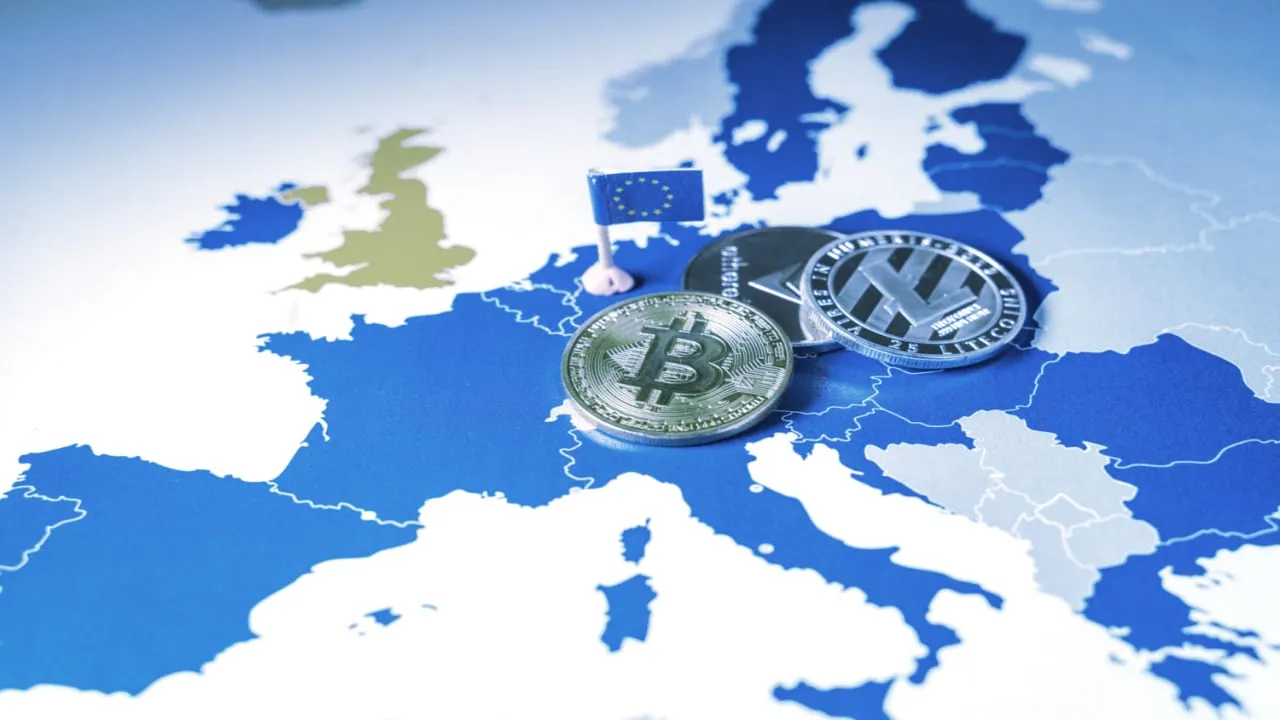After more than two and a half years of discussions and adjustments, the European Union looks set to pass its landmark crypto regulations.
The comprehensive suite of new rules is slated for a vote on the week of April 17.
Markets in Crypto Assets (MiCA) is part of a broader package within the EU aiming to update the bloc’s approach on several digital financial fronts. MiCA itself focuses on crypto-asset providers, and the obligations they will have to declare. It also puts in place hefty requirements for operators of stablecoins.
Most importantly, though, it unifies the approach across all 27 member states.
This month’s vote, though, is far from the end of the story.
If members of the European Parliament approve the changes, countries have as long as 18 months to implement them. The actual details of how MiCA should be applied will be sorted out by ESMA, the EU’s securities regulator.
Nevertheless, it marks a major milestone not just for crypto in Europe, but around the world.
Companies based in other countries will be affected if they want to offer their services to EU customers, and financial commissioner Mairead McGuinness has spoken enthusiastically about sharing ideas with her United States counterparts.
“It’s very political,” says Marina Markezic, co-founder and executive director of the European Crypto Initiative, an industry group that was formed in response to the proposal of MiCA. “Brussels thinks that they’re coming up with very good standards and ideally they would be exported in other jurisdictions—it’s the Brussels effect.”
Europe takes on ‘crypto asset service providers’
MiCA is concerned with laying down rules for a broad category company referred to as “crypto asset service providers” or CASPs.
This covers firms engaging in all kinds of activities, from operating a trading platform and offering custody to marketing new assets and providing crypto advice.
Under MiCA, anyone looking to publicly offer a crypto-asset will need to produce a white paper that discloses information about it. This will include information about the issuer or the entity looking to admit it to trading, what they will do with the capital raised, what rights or obligations are attached to the asset, and what technology is underlying it.
They will also need to be upfront about possible risks to investing.
In some cases, the CASP responsible for producing this will be the issuer of the asset; but in others, it might be the trading platform offering the asset to customers.
Many in the crypto sphere will be familiar with the concept of a white paper, but Sam Tyfield, a corporate M&A lawyer at British firm Shoosmiths, says the EU rules will mandate a much tougher, standardized approach.
Drawing on his experience of amending and expanding a draft white paper to make it nominally MiCA-compliant, Tyfield says that “the amount of information and data required to do so is materially beyond current market practice for white papers and a significant challenge for most potential issuers of crypto-assets or tokens.”
“This is not a bad thing,” he tells Decrypt. “As it may lead to some of the more flaky crypto asset issuers drawing back from a project.”
Anne-Sophie Cissey, head of legal and compliance at French market maker Flowdesk, agrees.
Having come from a traditional finance background, she sees it as equivalent to the stringent standards that apply to issue equity. “I see how people are raising funds and just saying ‘Okay, there is a pretty picture, give us money and everything will be fine’ but don’t have a plan. With MiCA, we have this kind of information.”
One thing she doesn’t want to see though is a creeping paternalism. “But what I fear—not even with MiCA but maybe with MiCA [in practice], or with what they are doing in the U.S., is they want to protect the investor from himself,” said Cissey. “We are adults and we can make a decision.”
MiCA on stablecoins, NFTs
Another flagship component of MiCA is the tightening of rules on stablecoins. Under the proposals, issuers will need to maintain a reserve of assets backing up the tokens. They have to be segregated from their own assets, and invested in low-risk ways. EU lawmakers also leave space for large-scale stablecoin issuers to be subjected to more stringent rules such as higher capital requirements.
Those rules won’t affect central bank digital currencies though (CBDCs), which are exempt. Observers have long noted that MiCA’s origins, as a response to Facebook’s now-defunct Diem (formally called Libra) project, are rooted in fears of a non-government currency making headway in the region.
Writing shortly after regulations were first proposed, Wolf-Georg Ringe, director of the Institute for Law & Economics at the University of Hamburg, said: “Reading between the lines, the proposal shows the fear of losing monetary sovereignty to private actors, and it is no coincidence that a few days after the Commission’s proposal was published, the ECB [European Central Bank] launched its initiative for a digital Euro.”
A notable exclusion from MiCA is NFTs.
The requirement to draw up a white paper explicitly does not apply to assets that are “unique and not fungible, including digital art and collectibles.”
However, further clarification in the text raises the possibility that assets issued “in a large series or collection” could be considered fungible. Experts have suggested this could affect large-scale projects such as Bored Apes Yacht Club (BAYC) and CryptoPunks, whose scale impacts their claims on uniqueness.
This is one of the points that will likely be cleared up by ESMA’s guidelines.
Other aspects of digital finance are left out of MiCA as well, but some hope these could be incorporated in future versions or in other legislation.
“A number of technologies have emerged since MiCA was drafted—most notable of which is staking,” comments Nick Taylor, head of public policy EMEA at crypto exchange Luno. “More crypto companies are now looking to incorporate this into their value proposition, following the switch to proof-of-stake mechanisms, and guidelines on its usage are not yet set out in MiCA. Future versions of MiCA could also consider DeFi, NFTs and lending.”
Limitations of the regulation have already been identified at top European institutions. Last week, a member of the European Central Bank’s advisory board said that the recent progress in regulation was not enough.
Writing in a blog post, ECB supervisory board member Elizabeth McCaul said that the likes of Binance and the now-defunct FTX would likely not be considered “significant” under MiCA in its current form, and that a company’s whole operation needed to be considered, not just the scale of their presence within the EU.
‘Overwhelmed’ by cost to comply
Since MiCA was first proposed, the EU Crypto Initiative has been particularly worried about how start-ups will handle the new regulatory burden.
“I think that they might not have the financial capacity, the manpower, to comply,” says Markezic. “We’re just going to see some of them basically being overwhelmed by it.”
Flowdesk’s Cissey says that her company is “90% of the way there” in terms of preparing for MiCA. But she suspects that any new entrants to the market will look elsewhere when starting up. “If I wanted to launch a new project, I would do it in the BVI, Cayman Islands, or the Bahamas,” she said.
Dion Seymour, crypto and digital assets technical director at tax advisory firm Andersen LLP, says that this kind of “regulatory shopping” is likely already happening. “Quite often with some of the smaller firms in particular, as with any small business, the regulations being put upon them can be quite difficult and they do need to engage with regulatory lawyers, which aren’t cheap,” said Seymour.
On the plus side, however, a unified approach will open up opportunities for any company able to contend with the new rules.
Once they are authorized in one country, this can be passported across the rest of the Union.
“I would say the best part of MiCA is really giving access to the whole EU market,” says Markezic. “Right now we have a very, very different situation in all the member states. Some do have some regulations, some have zero, and it's really hard to just be compliant there. For larger companies, a unified European approach has a lot to offer.”
Przemyslaw Kral, CEO of Polish crypto exchange Zonda, has a similarly upbeat position. “While MiCA will undoubtedly present a challenge for some of the smaller crypto startups, I predict the overall effect will be positive,” he says.
“The regulatory clarity and certainty provided by MiCA are attractive to institutional investors and larger firms, leading to increased investment and growth opportunities in the European crypto market,” says Kral.

